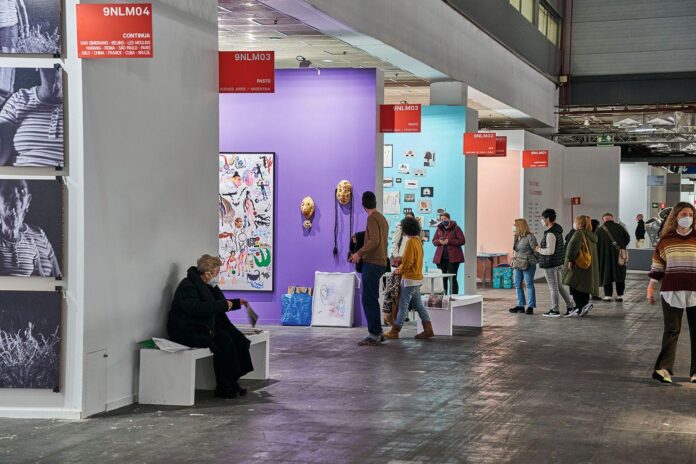Rich Latin Americans are fleeing their home countries, where leftward swings have installed newly elected socialist governments hungry for tax reform, and are heading to Spain. “Madrid rivals Miami,” declared the New York Times last year, in an article that detailed how high-net-worth individuals from Venezuela, Mexico and Peru have recently moved to the Spanish capital.
A subsequent Financial Times report noted that thousands of Argentines, both very wealthy and middle class, were also migrating to Spain due to an ongoing financial crisis. Most are met with open arms, both culturally—Latin Americans can naturalise easily into Spain due to a shared language and common ancestry—and financially: Madrid levies the lowest taxes of Spain’s 17 regional governments. Not by coincidence, then, the city is seeing an upswing in Latin American galleries opening spaces. In the past year alone, Ginsberg from Lima, Rosenblut & Friedmann from Santiago and Hilario Galguera from Mexico City have set up shop, joining spaces like Bernal Espacio, first established in Colombia, that opened in previous years.
“The number of Latin Americans in Madrid has grown exponentially and many of our Latin American clients have moved to Madrid or are investing in Spain,” says Paloma Jaramillo, the director of Galería La Cometa, a Bogota gallery that opened its Madrid space in 2019. “We saw it as an opportunity. For us, the Latin American market in the country is our main target.” She adds that in the four years she has been in Madrid, galleries from Mexico, Chile, Colombia and Brazil have opened a space in the city.
There are other practical reasons to move too, according to Ginsberg’s director Claudia Pareja: “As an emerging gallery that is hitting a ‘puberty phase’, many of our artists who we’ve represented since they left university are now moving to Europe. Having a small Madrid based team allows us to be in close proximity and support them in this new phase,” she says.
One institution that is especially suited to benefit from this wave of migration is Arco Madrid, Spain’s premier contemporary art fair, which holds its 42nd edition this month. “The influx of Latin American collectors and potential collectors into Madrid has increased in recent years—although it has been happening for nearly a decade. And the fair has been developing alongside these shifts to become the place to see Latin American art in Europe,” says Maribel López, Arco’s director.
The fair’s dedication to Latin America is longstanding and pronounced: around a third of its galleries come from the region. Accordingly, some of the region’s top collectors—many of whom are acquiring “status-symbol” second residences in Madrid and fuelling a new property boom in the city—are regulars at its stands. This commitment to the region has been especially clear in recent editions: In 2022, with some Latin American galleries and collectors not able to travel to Spain due to Covid-19, the fair staged the curated exhibition, Never the Same, of Latin American artists.
Nonetheless, the circumstances drawing in these wealthy individuals could also be short lived, as a struggle between Madrid’s conservative regional government and the leftist national government over domestic fiscal policy imperils the capital’s tax-haven status. Last month, Isabel Díaz Ayuso, the president of the community of Madrid, announced a series of tax cuts designed to create investment opportunities for wealthy foreigners, citing Latin Americans as a key example.
But the Spanish Prime Minister Pedro Sánchez has dismissed the viability of these cuts and is reportedly seeking to overturn them. Should he win, and wealthy Latin Americans find themselves once again facing a government hostile to their bank balances, they could very well depart for new shores. Whether galleries will follow them remains to be seen.

























